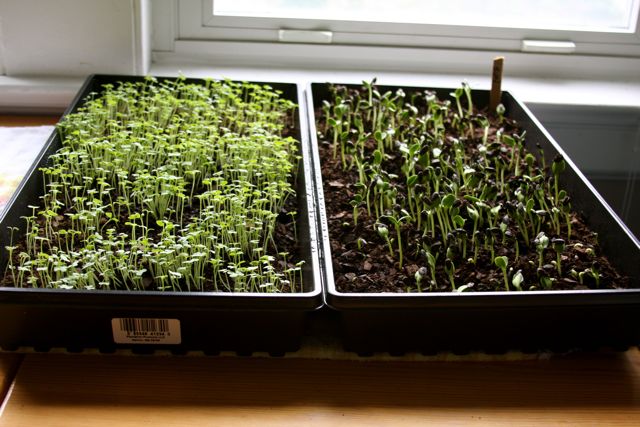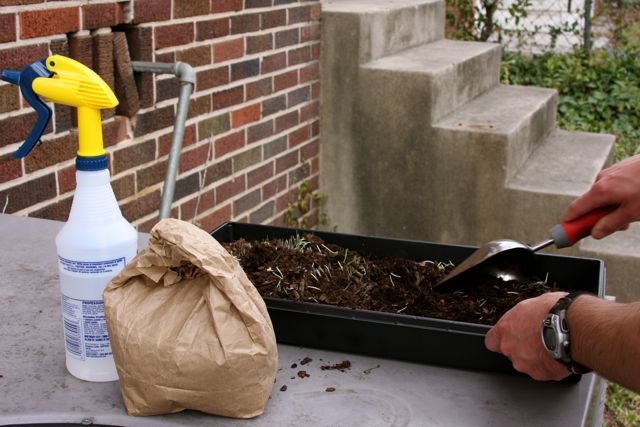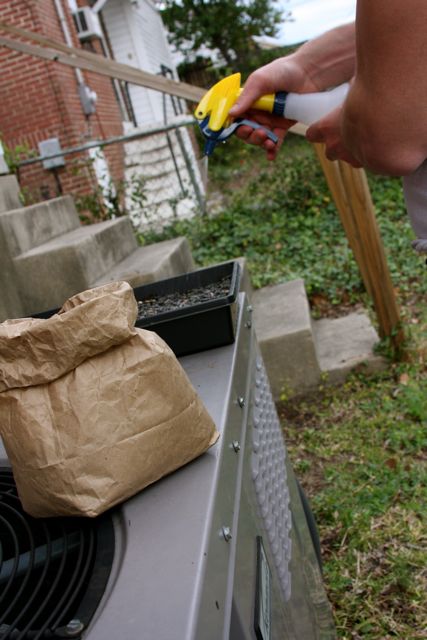microgreens.
A guest post by David . . .
I had a sudden urge to plant something edible this past weekend. With a few conditions. We don’t have any sunny yard space to speak of and really don’t want to put too much fuss into our rental. And we’re on a budget, want quick results, and would like for our kids to join in.
Enter microgreens.
Microgreens are not their own species. Yes, I asked our local feed store if they carried “microgreen seeds.” In my defense, he said, “No, we don’t, but we should.” Actually, microgreens are simply the very young seedlings of edible vegetables and herbs harvested 5-14 days after planting. So a radish or cabbage or kale crop grown for a week and clipped at its base is a microgreen. These differ from sprouts in that they are still planted in soil and receive sunlight.
Microgreens have enticed fine cuisine patrons as flavorful touches and colorful garnishes for years. But they are gaining popularity among the proletariat for their rich taste and new research suggesting denser nutrient content than their adult counterparts.
So I went to a neighbor’s home to bum a few bags of seeds and a twenty-minute crash course on what to do. Then I swung by a hardware store for plastic trays and potting soil.
The process is painfully simple. Amie, Judah, and I lined up five trays on the front lawn and filled them half full with potting soil. Then Judah sprayed Amie with the water bottle. Then I yelled at Judah. Then Amie stained her new stretch pants with soil. Tears were shed, amends were made, daddy cooled down.
I cut out a piece of cardboard to gently flatten the soil. Then we sprinkled each tray with a different seed – two kinds of radishes, a mesclun sweet salad mix, kale, sunflower, and mustard broad leaf. I gently pressed the cardboard down again to set the seeds into the soil. We crumpled soil on top and watered them well. Then we set the five trays up in front of a sunny window in my office.
Within four days, the first triumphant microgreens were ready to clip at the base, rinse, and scatter liberally on a fresh salad. You can’t get fresher, nutritious greens. We cut them when we need them to juice, snack on them, and put them on salads, pizza, or pita with Julie’s homemade hummus. We’ve even taken to dicing them up and sneaking them in peanut butter and jelly sandwiches for the kids.
For our frugal readers, the savings is killer. A four-ounce bag of microgreens runs $4 at the Farmers Market. Compare that to a one-time cost of trays (you can use empty spinach plastic containers), organic potting soil that will last a few trays’ worth (we’re still waiting on our backyard compost to ripen), and bulk organic seeds that can be as little as fifty cents an ounce. Altogether, fresh, organic, homegrown microgreen harvests will run you pennies per ounce.
We are a week in and have already eaten through and replanted a couple of trays now. I think our greens are here to stay.







